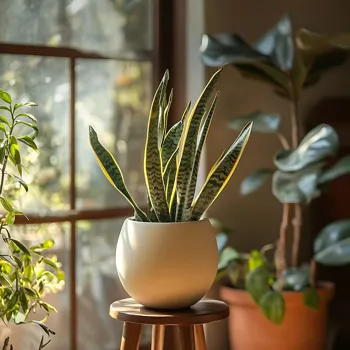Transform your home into an eco-friendly haven! Discover 7 easy steps to go green effortlessly. Read on for a sustainable living guide!
Namaste, readers! Are you feeling the heat more than usual these days?
The rising temperatures are a stark reminder that we need to take care of our Mother Earth. And where better to start than from our own homes?
Transforming your house into an eco-friendly haven is not just good for the environment; it's good for your health and your wallet too! Don't worry, you don't need to be a super environmentalist to make a difference.
Here are 7 simple steps to get you started on your green living journey, bilkul easy-peasy!
Switch to energy-efficient lighting for a brighter, eco-friendly home
Let's face it, we all love a brightly lit home. But traditional incandescent bulbs? They guzzle electricity like there's no tomorrow! Switch to Compact fluorescent lamps (CFLs) or Light Emitting Diodes (LEDs). These consume significantly less energy and last much longer.

While CFLs were initially introduced as an energy-saving alternative, LEDs have now surpassed them in both efficiency and longevity. LEDs have a much longer lifespan, potentially lasting for many years, which translates to fewer replacements and less waste.
Replacing your old bulbs is a small change with a big impact, like adding a pinch of masala to your chai – subtle but oh-so-satisfying! Another smart move is to make the most of natural light during the day. Open your curtains and blinds, and let the sunshine in.
You'll be surprised how much you can brighten your home without even switching on a light! Position your furniture strategically so that natural light is maximized.
Consider using light-colored paints for your walls as they reflect more light, reducing the need for artificial lighting during the day. Installing skylights or larger windows can also significantly increase natural light.
During daylight hours, encourage family members to utilize spaces with the most natural light for activities like reading, working, or hobbies. You can save money on your electricity bill and create a brighter, more cheerful home environment!
If you're building from scratch, consider the orientation of your house to maximize sunlight in the winter and minimize it in the summer, thereby reducing the need for artificial heating and cooling. Remember to switch off the lights when you leave a room.
It is a fundamental practice that can contribute to significant energy savings over time.
Water conservation tips for homes in water-scarce areas
Water is precious, especially in a country like India where many regions face water scarcity. So, let's be smart about how we use it at home. Start with fixing those leaky taps! Even a small drip can waste a lot of water over time.
Imagine a slow drip filling up buckets – that's how much water you're losing! Install low-flow showerheads and faucet aerators. These devices reduce the amount of water that flows out without compromising water pressure. You'll still get a good shower, but with much less water usage.
When watering your plants, do it early in the morning or late in the evening to minimize evaporation. This ensures that the plants get more of the water. Invest in a watering can and learn how much water each plant needs. Using a hose can lead to overwatering.
Consider building a rainwater harvesting system. You can use the collected rainwater for gardening, washing your car, or even flushing toilets. Many cities offer subsidies and incentives for rainwater harvesting systems.
During drought conditions, collect water from rinsing vegetables and fruits to use for watering plants. If you have a garden, mulch around plants to retain moisture in the soil, reducing the need for frequent watering.
Encourage your family to be mindful of water usage when washing hands, brushing teeth, or doing dishes. Using a mug for rinsing teeth instead of running the tap continuously can save liters of water. Make it a family habit to only run the washing machine or dishwasher when they are fully loaded.
If you're buying new appliances, look for water-efficient models with ratings that indicate lower water consumption.
Indian households can compost kitchen waste for nutrient-rich soil
Every Indian household generates a fair amount of waste, especially kitchen waste like vegetable peels, fruit scraps, and tea leaves. Instead of throwing it all away, why not compost it? Composting is a fantastic way to turn your waste into valuable fertilizer for your garden.
It's like turning trash into treasure! You can easily set up a composting bin in your balcony or backyard. There are also many online tutorials explaining the process in simple Hindi and English.
Composting is a natural process that decomposes organic matter, reducing the amount of waste sent to landfills. It also enriches the soil with nutrients, making it great for gardening. Compost helps improve soil structure, retain moisture, and suppress plant diseases.
To start composting, you'll need a container or bin. Mix "browns" (dry leaves, twigs, paper) with "greens" (food scraps, grass clippings). Keep the compost moist but not soggy and turn it regularly to aerate it. In a few months, you'll have nutrient-rich compost to use in your garden.
If you live in an apartment, you can use a vermicomposting bin, which uses worms to break down the organic matter. It's odor-free and compact, suitable even for small spaces. Avoid composting meat, dairy, or oily foods, as they can attract pests and create unpleasant odors.
Regularly check the moisture level of your compost. If it's too dry, add water; if it's too wet, add more dry material. Use the compost to improve the soil in your garden, pots, or planters. It will nourish your plants and help them thrive.
Composting reduces your carbon footprint by diverting organic waste from landfills.
Reduce plastic use, embrace reusables, educate others, make a difference
Plastic is a major environmental headache. It takes hundreds of years to decompose and pollutes our oceans and land. The solution? Reduce your plastic consumption and embrace reusable alternatives. Carry your own cloth bag when you go shopping. Say no to plastic bags from shops.

Keep a reusable water bottle with you and refill it throughout the day. Avoid buying bottled water whenever possible. Use steel or glass containers for storing food instead of plastic ones. If you have to use plastic, choose products made from recycled plastic.
Buy loose vegetables and fruits instead of pre-packaged ones. This will reduce the amount of plastic packaging you bring home. When ordering takeout, ask for your food to be packed in reusable containers. Say no to plastic cutlery and straws.
Consider using bamboo or steel cutlery and reusable straws instead. Support local businesses that use sustainable packaging. These small changes can add up to a big difference in reducing plastic waste. Educate your friends and family about the importance of reducing plastic consumption.
Encourage them to adopt reusable alternatives as well. Participate in community clean-up events to help remove plastic waste from the environment and raise awareness. By making small changes in our daily lives, we can significantly reduce our dependence on plastic and protect the environment.
Switch to eco-friendly cleaning products for a healthier home
Many household cleaning products contain harsh chemicals that can be harmful to both the environment and your health. Switch to eco-friendly cleaning products made from natural ingredients.

Look for brands that use plant-based ingredients and avoid chemicals like parabens, phthalates, and chlorine bleach. You can also make your own cleaning solutions using simple ingredients like vinegar, baking soda, and lemon juice. Vinegar is a great all-purpose cleaner and disinfectant.
Baking soda is effective for scrubbing and deodorizing. Lemon juice can be used to remove stains and grease. For example, mix equal parts of vinegar and water in a spray bottle for an all-purpose cleaner. Sprinkle baking soda on surfaces to be scrubbed, and then wipe clean.
Use lemon juice to remove stains from countertops or sinks. Avoid using harsh chemicals in your cleaning routine. They can pollute the environment and harm your health. Open windows and doors for ventilation when cleaning to allow fresh air to circulate.
Use microfiber cloths for dusting and cleaning. They are effective at trapping dirt and can be reused multiple times before washing. Store your cleaning supplies in a designated area away from food and children. Dispose of cleaning products properly according to local regulations.
By switching to green cleaning methods, you can create a healthier and more environmentally friendly home.
Support local farmers and artisans for sustainable, eco-friendly living
Whenever possible, buy products from local farmers and artisans. This supports the local economy, reduces transportation emissions, and ensures that you're getting fresh, seasonal products. Visit your local farmers market to buy fresh produce, homemade goods, and handcrafted items.
Support small businesses and shops that are committed to sustainability. Look for products that are made locally with sustainable materials and ethical practices. Avoid buying products that are shipped from far away. The transportation of these goods contributes to carbon emissions and pollution.
Support companies that prioritize environmental responsibility and social justice. Choose products that are certified organic, fair trade, or sustainably sourced. Buy in bulk to reduce packaging waste. Many stores offer bulk bins where you can purchase items like grains, nuts, and spices.
Reuse containers whenever possible to minimize waste. When shopping, bring your own bags, containers, and bottles. Support community initiatives that promote sustainability and environmental awareness. Participate in local events, workshops, and clean-up drives.
Advocate for policies that support sustainable practices and protect the environment. Write to your elected officials and urge them to take action on climate change and environmental issues. By supporting local and sustainable businesses, you can contribute to a healthier economy and environment.
The journey to an eco-friendly home is a continuous one. Start with these simple steps and gradually incorporate more sustainable practices into your daily life. Together, we can make a difference and create a greener, healthier future. Jai Hind!










